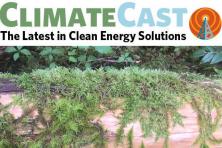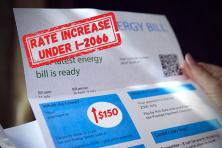With only a few weeks left until the November 3rd election, there’s much ado in the media’s climate coverage about what a Biden presidency might do for clean energy and how it could be “history making” for efforts to address climate change in the US. Meanwhile, real progress and developments in clean energy, electric vehicles, and mass transit are happening across the region and around the country. Before diving into the clean energy news of the past few weeks, we'd like to share some critical upcoming ballot initiatives in Seattle and the Portland metro region:
- Let’s Get Moving 2020 for Multnomah, Washington and Clackamas counties in Oregon
Measure 26-218 (a.k.a Let’s Get Moving 2020) is an important first step that starts to address the longstanding cycle of systemic racism and the historic lack of investment in underserved communities across our region, while also positioning us to begin the necessary work of investing in Portland’s metro area regional climate-smart future. If approved by voters, Measure 26-218 will make the biggest investment in our Metro region’s transit system in a generation.
Read more about why we support Measure 26-218. - Seattle Proposition 1
Seattle Proposition 1 will invest in essential bus service, create greater affordability for transit riders, address the West Seattle transportation crisis, and ensure that our transit system is efficient and reliable. Proposition 1 will renew and modify a measure that is set to expire, providing our community with key transit investments over the next six years.
Read more about why we support Proposition 1.
Rockin’ on down to Electric Avenue
As many cities across America have emerged from COVID-19 lockdown, the brief respite in air pollution—particularly transportation emissions—has begun to fade. But changes to electric infrastructure, fleet commitments to electrify, and ongoing developments in electric vehicle technology mean that travelers are returning to a different transportation landscape. New signs along I-94 in Wisconsin along the interstate between Madison and the Illinois border indicate the 110-mile corridor is “EV ready,” meaning there’s a DC fast-charging station every 50 miles. Amazon unveiled its custom Rivian electric delivery vehicle last week expecting to have 10,000 vans on the road “as early as 2022.” And Sysco joins other major fleet operators PepsiCo and Walmart testing battery-electric trucks in their delivery fleets as part of company efforts to reduce transportation emissions.
Solar and clean energy is the “new king”
A new report from the International Energy Agency, a leading international authority on energy analysis, names solar power the "new king" of global electricity markets. The report names cheap finance and maturing technology as key reasons why solar will be more cost effective than both new coal or gas power plants. This report is reflected in the energy trends of the past few months, with reports of US solar generation growing by at least 22% during the pandemic lockdowns and continued evidence of coal’s precipitous decline despite the Trump administration's rollbacks of federal pollution regulations. Further, renewable energy stocks and index funds are at an all-time high, supporting trends of a larger clean energy transition.
Big tests for public transit
The COVID-19 global pandemic has caused a steep decline in public transit ridership across the nation. While the CARES Act earmarked some federal relief for mass transit agencies, this hasn't been enough for many agencies to cover their cratering revenue forecasts. The numbers are challenging with millions out of work, transit ridership down 24% from 2019 levels, and at least 20% of the U.S. workforce still working from home as of August. But a renewed focus on the legacy impacts of environmental racism highlights how support for mass transit is a critical social and racial justice issue: slashing city bus service would disproportionately target “low-income communities, communities of color, and people with disabilities.”
One thing you can do
Make a plan to vote!
Get your ballot in early and make sure others vote early. Check with friends or family who recently registered to vote to ensure they received their ballots, and make sure they have a plan to vote by November 3rd.





